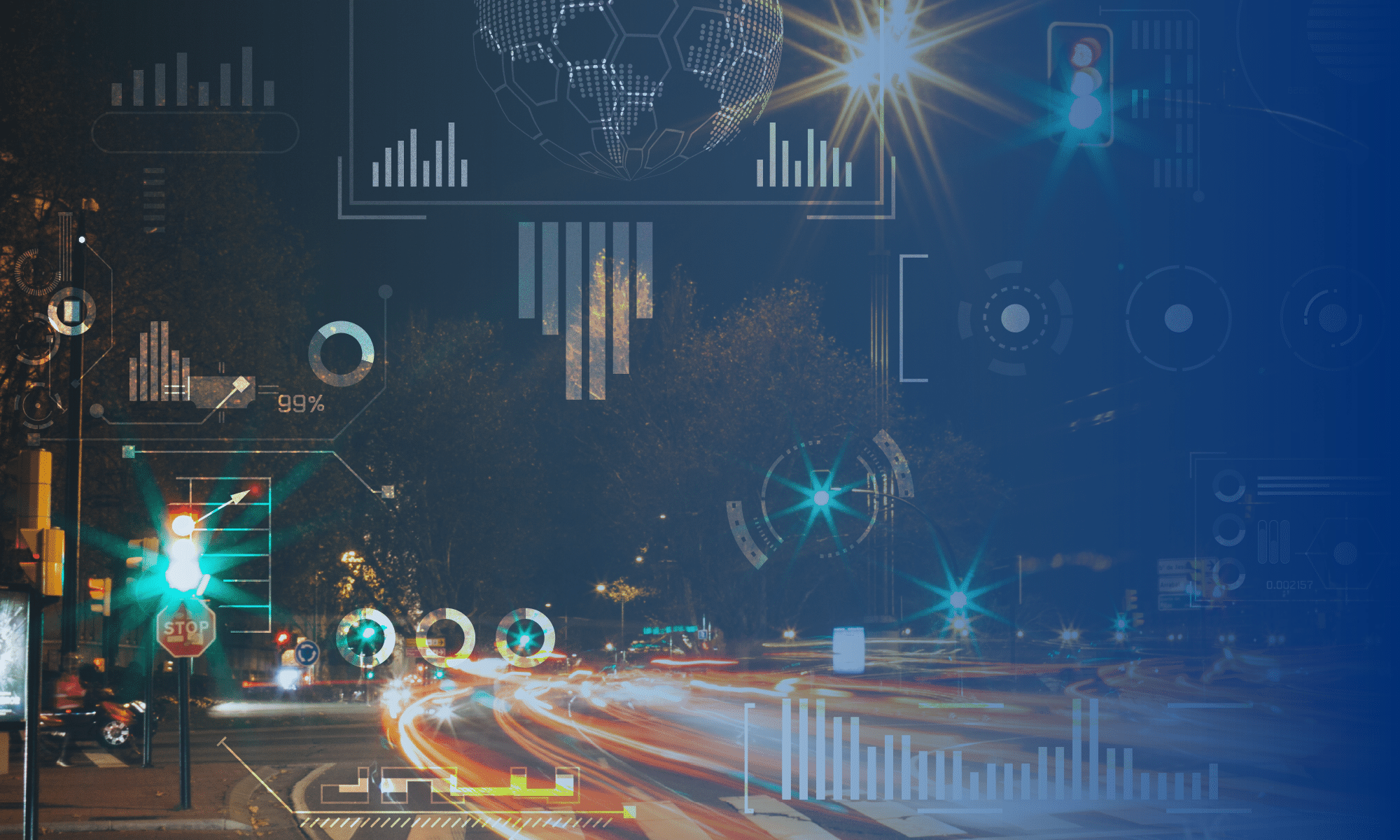
Urban traffic has always been a balancing act; keeping people and products moving while minimizing congestion, delays, and environmental impact.
Today, cities are turning to real-time traffic signal data such as INRIX Signal Analytics, to transform how they manage mobility. By harnessing adaptive signal timing technology, cities are not only improving travel flow but also tackling one of the biggest urban challenges: emissions.
The Challenge: Congestion and Air Quality
Congested intersections are more than just a nuisance. Idle vehicles stuck at poorly timed lights waste fuel, emit harmful pollutants, and create safety risks. For cities striving to meet climate goals, traffic signal optimization presents a clear opportunity.
Enter Adaptive Signal Timing
Traditional signal systems rely on preset schedules, often adjusted only a few times a year. Adaptive signal timing, by contrast, uses real-time traffic data to continuously adjust the length of green, yellow, and red lights. The goal: to respond dynamically to current conditions, whether it’s rush hour, a sports event, or unexpected incidents.
This is where Signal Analytics becomes valuable. By leveraging GPS-based vehicle movement data and connected car insights, Signal Analytics provides cities with granular visibility into how intersections are performing. Unlike older loop-detector technology, these solutions deliver broad, scalable coverage without expensive roadside hardware.
Real-World Applications
- Reducing Congestion Hotspots: Cities like Austin and Nashville have used INRIX data to pinpoint intersections with recurring delays. By adjusting signals adaptively, these cities reduced queue lengths and smoothed traffic flow often without costly infrastructure overhauls.
- Cutting Emissions: Every minute a car idles at a red light it releases more greenhouse gases and harmful air pollutants. Near schools, hospitals, and residential neighborhoods, this isn’t just efficiency. It’s cleaner air and healthier communities.
- Improving Reliability for Transit: Public buses and emergency vehicles benefit from signal priority when combined with adaptive systems. INRIX data helps cities track performance, ensuring transit runs on time and first responders face fewer delays.
Data-Driven Decision Making
Cities are no longer constrained by static, outdated traffic systems. With Signal Analytics that provides real-time, data-driven adaptive signal timing, they can move beyond reactive adjustments and embrace predictive traffic management—anticipating demand before bottlenecks form. This evidence-based approach allows leaders to measure real results, from travel time savings to reduced fuel consumption and cleaner air, building both public trust and a strong case for investment.
As more vehicles become connected, adaptive traffic signals will form the backbone of smarter, greener city ecosystems integrating seamlessly with autonomous vehicles, micromobility solutions, and urban climate strategies. The outcome is clear: faster commutes, healthier communities, and safer, more sustainable streets. With INRIX, these benefits aren’t just future possibilities, they are within reach today. To learn more, go to inrix.com/products/signal-analytics/.




